
It seems, however, that while I wasn't looking, the world decided otherwise. I was watching a stream archive of a popular recent horror release. Eventually, it got to a plot point involving subject matter that was a bit too close to real-life horror for me (a parent having a very potent and realistic reaction to watching their small child die horribly), so I turned it off. The game had seemed close to the end, though, so I Googled to spoil myself on what was happening, and it turned out, "oh, it was all fairies." Which is just about the most unscary thing I can imagine, collective gamer flashbacks to hearing "hey, listen" 20,000 times notwithstanding.
I would think this revelation would be widely panned, particularly among an audience where those raised on SCP creepypastas enjoy disproportionate representation, but no. People seem to be taking it in stride.
It reminds me - to switch gears here - of a modern fantasy title written for a middle-aged female audience I ended up reading a few years back. The plot: Woman moves back to small Vermont town; discovers that she's a descendant of witches and that her neighbors are all supernatural creatures; is challenged by the local grown-up mean girl, who's secretly some sort of faerie queen. It seems - I did some research after being perplexed here - that the whole Big Bad Tinkerbell thing is not just a idiosyncracy of this particular author: fairies are the go-to villains in that subgenre. Their Sugar Plum appearance is not a secret front for more eldritch entities or more sinister powers. They're just...fairies, but bad. Like, individual fairies will announce their presence through signature hues of glowy multicolor glitter - which the author means to be sinister, and man, is that a miscalculation.
Now, I did some thinking, as one does in the wake of disconcerting revelations, and I ultimately concluded that, while nothing outside of glitter bombs is going to make glowy glitter scary, the whole fairy villain thing could be kind of understandable, in a skancewise way. The conflicts in these books frequently seem to be metaphors for clashes with the mean girls in town, and fairies, all fluttery and pretty and surface glamour, are the least-disruptive analogue for that cohort among the better-known fantastic creatures. (These books are not written for the curious, so only the most mainstream monster types need apply. You're not gonna get stuff like, say, the Huldra in here.) The thing is that we're supposed to be terrified of these fairies, of their powers and capabilities, viewing them not as twee, cutesy sprites, as these flitty little wee things, but as mighty, awesome creatures, and I'm sorry, I just can't make that transition. Yes, so far as they're beings with supernatural powers, they command vast destructive forces, but so does, say, erosion, and I don't see any horror movies on the premise of limestone weathering. Maybe they work with the modern fantasy target audience because of the mean girls thing, but I would think the gaming horror community would be made of slightly sterner stuff.
Then I thought of another possibly relevant media experience of mine, with the game Firewatch, about a man taking a job as a fire lookout after a long bout of caring for his dementia-stricken wife. Despite dealing with a couple plot points that resonated with me personally - taking care of a family member during a long illness and sorting oneself out afterward; working as a fire lookout, a job that's always intrigued me - I didn't finish it or get along with it. The breaking point came with was initially a special moment after the long hike through the beautifully-rendered interior on the way to your post: my first moment in the lookout tower, the wild expanse of nature that my character would inhabit for the next few months spread out for the first time in its full, panoramic glory before me. Aglow in the twilight, it was a glorious sight, the perfect capper to a beautiful hike. After taking in the scenery, I spotted a poster on the wall illustrating the local flora. What wildflowers could I discover in this region? Enchanted, I drew close to look - and, immediately, the moment was shattered by a screech from the radio: a fellow fire lookout who called to mock my character for his presumed mental problems (claiming that anyone who took a job in nature was obviously unstable and running away from something, signposting the game's attitude toward the great outdoors and those who love it). I was extremely irritated - and then I learned that I was expected to form a positive and loving relationship with this individual over the next few hours that would serve as the focus of the entire game. I dumped Firewatch soon afterward.
It wasn't news to me that my opinion of the title was at odds with conventional wisdom, as the game was highly-praised before I tried it out. But months later, happening across player discussions of the game on Giant Bomb, I discovered that most gamers had had an acutely opposite reaction to the particular moment that turned me off. Everyone else found the nasty radio call, name-calling and all, deeply comforting. They had all been frightened by the walk to the lookout tower - at being alone in the wilderness, a sensation the panorama atop the lookout tower only punctuated. The other lookout, no matter how abrasive or antisocial, was a comfort, a handhold, solely due to being another human presence.
So, given all the above, here's my question: are fairies viable figures of horror in gaming because they represent gamers' fear of nature?
I don't want to fall back on the stereotype of the gamer cocooned in gadgets, as averse to analog pursuits as Dracula is to sunlight. But the evidence ain't exactly pointing elsewhere.
BLOG POST EXTENDED EDITION LINER NOTES!:
- Besides the fairy thing, the fantasy book I mentioned is remarkable for how it is Ready Player One for knitting. As with video games in Ernest Cline's book, where the entirety of existence actually hinges on those video games you thought I was wasting my life playing, Mom, here, knitting is the cause of and solution to every single problem the characters encounter. Every character, save the boyfriend, is a knitter. The magic system is based on weaving and knitting. Enemies trap the heroine in skeins of psychic yarn and attack her with fusillades of killer knitting needles and careening spinning wheels. Wizards denote their power levels through the intricacy of the stitching on their cable-knit sweaters. The heroine saves her man by mentally weaving him a lifeline from her magic, and she is saved in turn by a Spirit Bomb from a ghostly "army of knitters" past to present: "all in period dress, kindred spirits from across the centuries. Hippies and flappers, Gibson Girls and Civil War belles, Colonials and early rustic settlers. They laced their hands together [see! human knitting] and kept me from going under." The author's commitment to the bit is downright impressive and weirdly admirable.
- The other thing for which I remember the book is this section where the boyfriend is trying to drive the non-driving protagonist's old Buick through a New England blizzard and she and her friend are aggressively backseating and interfering with the boyfriend's operation of the car and making huge distractions of themselves, to the author's beaming approval (they know best, after all! Um, despite not knowing how to drive), and as someone who has been in that very situation - driving an old Buick through a New England blizzard, once with a family member in the front seat who was freaking out in a performative way and making herself a legitimate danger - this made me viscerally angry. I have known few situations that are more nerve-wracking than trying to operate a vehicle when the tires won't grip the road and visibility slows your progress to a crawl, and both situations are getting worse by the minute, yet going too fast means imminent destruction of one of your most valuable assets and massive bodily harm, and stopping on the side of the road like a sitting duck means potentially the same thing while getting you no closer to safety. It is a situation that demands every single bit of your concentration at every moment until you turn into your driveway - one where absolutely no distractions belong, least of all from those who insist everyone else is too incompetent to drive yet refuse to take the wheel themselves, instead opting to throw tantrums like spoiled children, making themselves the most dangerous thing on the road and risking the lives of everyone in the car.
Yes, this is colored by personal experience, but my personal experience is very pertinent, dammit. Driving in snowstorms has been the closest Maine has come to killing me, and Maine wants to kill me very badly. (It was not, however, the closest that family member came to killing me, and it turned out they also, unbeknownst to me at the time, wanted to kill me very badly.) - The other negative association I have with Firewatch involves a series of posts and opinion pieces on the game when it was au courant ranting about what a coward the main character was for taking a retreat for his mental health once he couldn't do anything more for his wife instead of staying and fixing his wife's dementia!!!, on which I thought, wow, you have absolutely no experience with chronic illness or caretaking at all, have you. (Given Firewatch's opinion on those who seek out nature and the esteem it was held by that crowd, I wouldn't be surprised if the game ultimately ran in the direction of those ignorant op-eds.)
- Those looking for an account of the life of a fire lookout that's more invested and less repulsed by the details of the job should read Fire Season by Philip Connors. It could be better-written - the author's trying too consciously to be a Great Yet Faux-Humble Nature Author and comes off as insufferable a good deal in the early going - but it is, at its best, a good glimpse into what the day-to-day job is like and the mindsets of those who take it when the author gets out of his own way.
- Fire Season did convince me, though, that perhaps the life of a fire lookout was not for me due to Connors' notation of the massive amount of animal droppings left in accommodations between seasons.
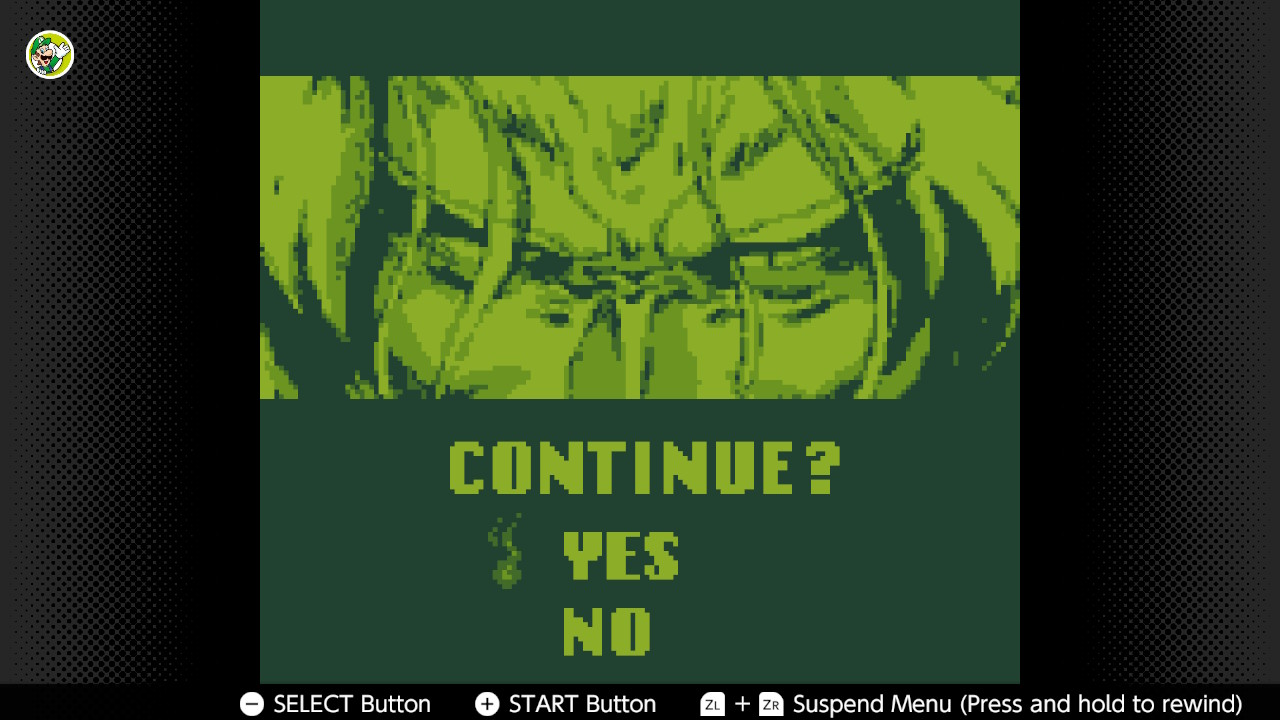
With which game, though? The killer DS app Dawn of Sorrow? Curse of Darkness, starring a popular character from the show? The very first game in the chronology, Lament of Innocence, or the very first game, period? Well, friends, I marshalled my usual excellent priorities to tackle...the Game Boy titles. (Um, though I guess the neon green gives that away.)
I actually finished the first two previous Game Boy titles a couple years ago. I have more extensive notes somewhere, in some woebegone file, but what I remember is that I concluded Adventure was just too rough to matter and miserable to continue, and about Belmont's Revenge: a) it was solid; b) I liked the Mega Man gimmick with the themed castles, though I wished more were done with it and the levels were more extensive; c) I liked how Debussy's exacting "Passepied" was used to great effect as a final level theme, bringing Debussy to my attention as one of the few classical composers whose work doesn't (I'm sorry) bore me; and d) the final boss battle took more time than the entire rest of the game.
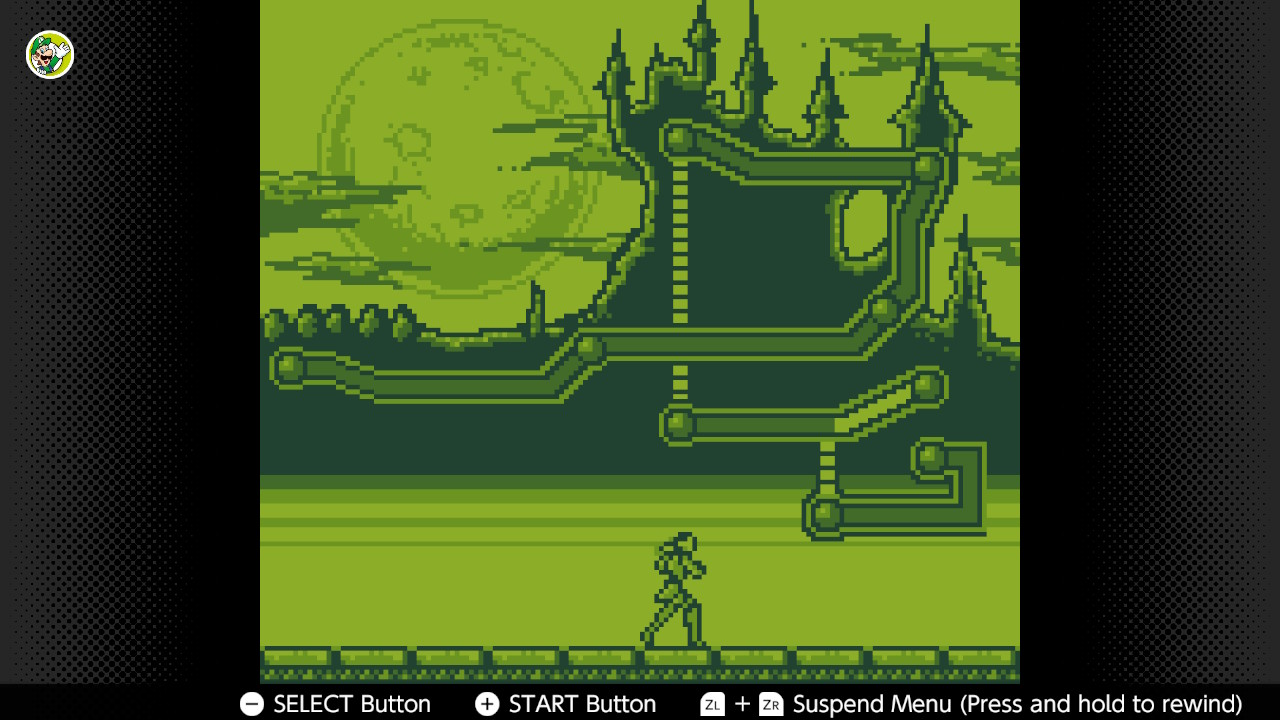
More recently (in a relative sense), I took advantage of the Halloween update to Switch Online to polish off Castlevania Legends. While I'm prepared to write a more complete article on this title, I note most of my opinions are reflected in this piece by the estimable VGJunk. My overall view is that it's really a nothing game. It has a number of original ideas, but it doesn't build on them, and very little comes of them. It's not a disgrace to the Castlevania name; it just is not remarkable in any way that you identify with Castlevania games. Which I suppose means that it is a disgrace? Not worthy of the name in a low-key manner, I suppose. Very, very soft disowning, though. It's one step above being a Castlevania game in the way, say, a Tiger game with the Castlevania license is. It has the aesthetic, but the guts and soul aren't fully there.
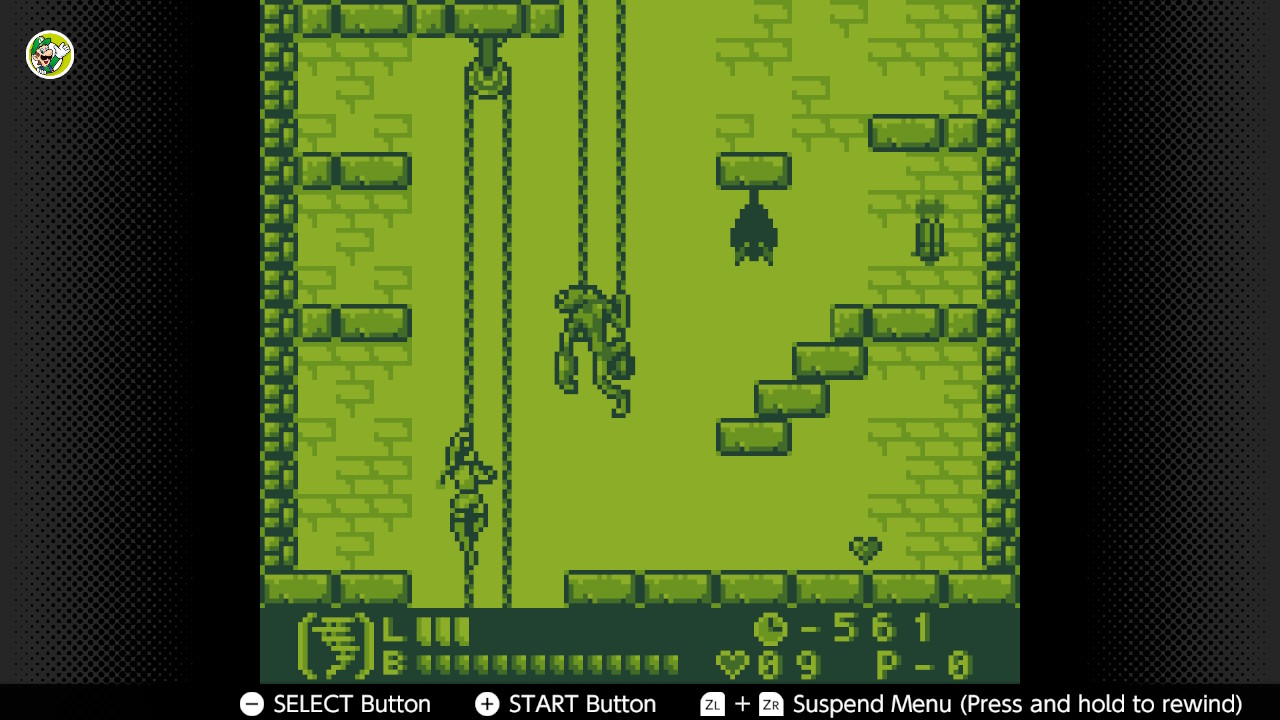
It doesn't know how to design smartly-hard encounters in the mien of Castlevania, so it settles for being persistently annoying. The respawn rate is wholly unreasonable - move a pixel, and defeated foes reappear. As VGJunk notes, it loves having enemies who home in above you, where you can't hit. And there's no escalation of difficulty; the game just keeps on being persistently annoying. As with the original Seiken Densetsu on this platform, there's big "just put a bunch of fuckin' blocks here" energy, where the developers want to expand their Game Boy title beyond the platform's typical scope but don't have the design chops to know how to do that.
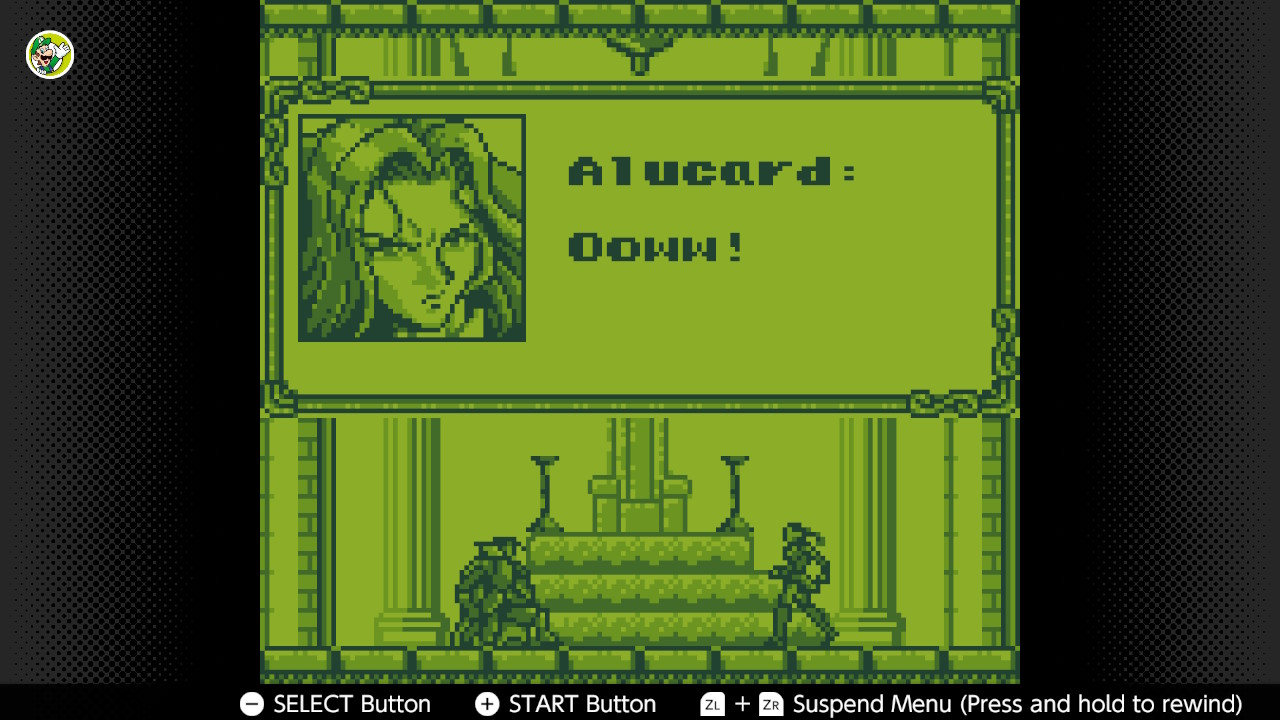
The bosses, on the other hand, are generally cake. The is the easiest incarnation Death ever; he just jumps from side to side in an arc safely above you and chucks a scythe over your head occasionally. As for the "Owwww!" incarnation of Alucard, you can get the boy caught in a pattern like money.
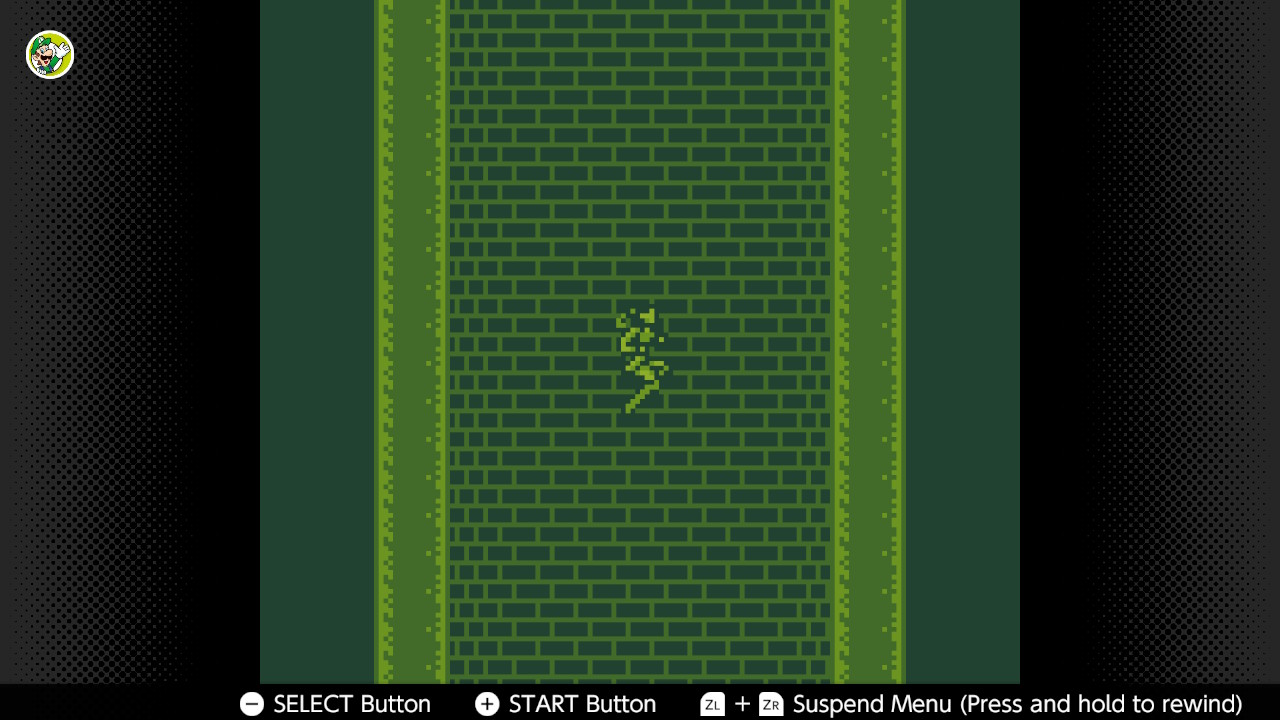
The jumping is bad. Every jump is in the vein of the last stage of Castlevania Chronicles has to be with one of Sonia's feet off the surface. I died more to jumping over standard pits or onto ropes that anything else. This is why Belmonts shouldn't wear high-heeled boots. It's a good thing we never had to play Trevor when he went through his own high-heels phase. Wait, is he an extra mode in Curse of Darkness? ...Dammit.
The special abilities seem like patches for certain problems whose implications for the rest of the game the developers didn't wholly think through. OK, it's Stage 3; we want to make things harder now. Hold on, we made the enemies too annoying. Well, just give players a healing spell. Wait, isn't that unbalancing? Well, I dunno; just make fewer candles then, I guess. Sonia also has Burning Mode, a special meter you can activate once per life that makes her invincible and gives double damage, which I imagine would have broken the game near-completely if I had ever run into enough resistance to remember to use it. (I think I used it on Drac, though.) Why didn't you hand that down to your descendants, O Venerable Matriarch? I'm sure Juste would have been happy to exploit it, along with the rest of his 37 superpowers.
Again, it's not a bad few hours if you have Nintendo Switch Online. "It's not bad" is probably the most damning thing you can say about it, in the good and bad senses. The delights are found in smaller elements:
Those of you who have taken note of any of the half-finished projects littered throughout this site might note that I have no shortage of worthwhile things to do. I have to make a proper scan of that Ghost Head manga. I need to tend to a number of things for the Angelique translation project. I have that Actraiser manga to summarize, which is miserable but historical, sort of. I have a number of half-finished posts for this site, and a number of half-finished translations for my other one. I'm in the middle of Super Mario Wonder. I have an entire three-year-old list of games to which I've been meaning to get that I've been neglecting.
So what did I spend a great deal of my recent time playing?
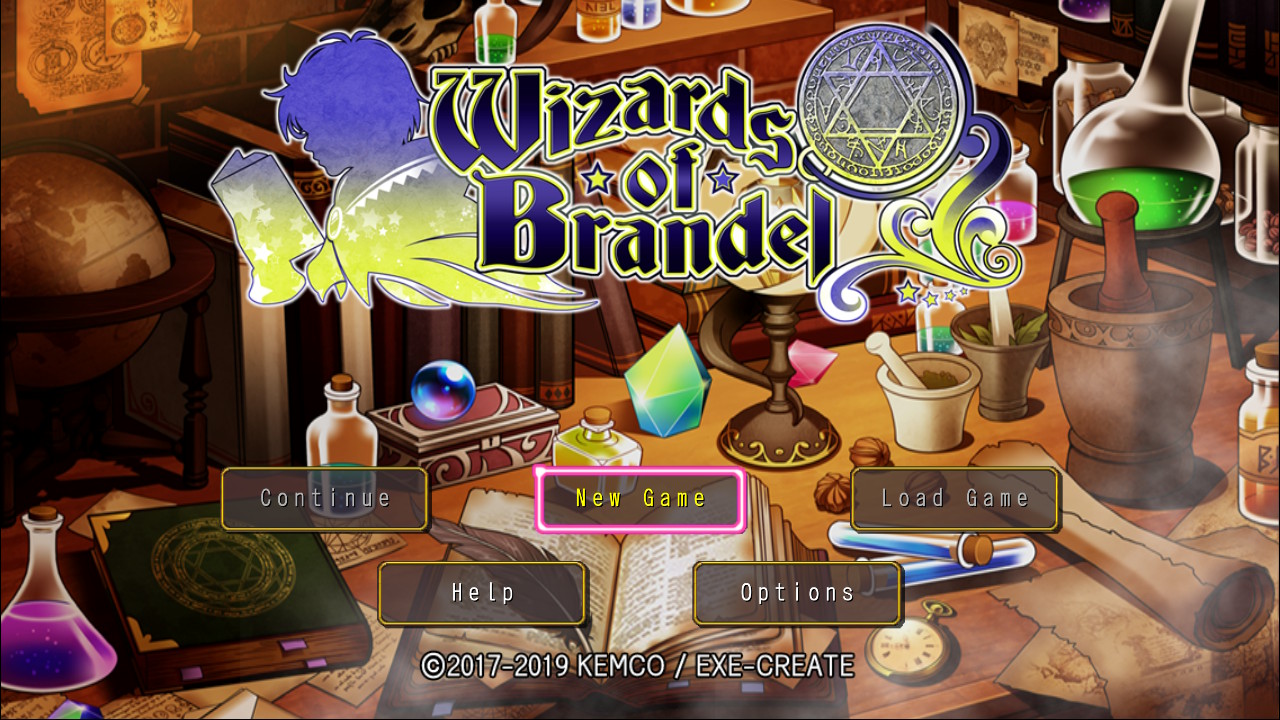
Yes. I'd run across the perjorative descriptor of "Kemco RPG," seemingly referring to a no-effort, mass-produced RPG rife with in-app purchases and pandering to retro tastes, in reading Shaun Musgrave's exhaustive work detailing Switch releases at TouchArcade. I had no first-hand experience with the material, however, nor any desire to correct that deficiency. Then, after Kemco made some sort of milestone news by announcing a celebratory collection of 50 of these titles, I ran across this thread, in which the poster (who has also detailed his experiences going through every game in a few of those 100-in-1 cheapo handhelds you see at Walgreen's) talked about how he had played through of these allegedly-shovelware titles and actually enjoyed quite a few of them.
While heartfelt, that wasn't quite enough of an endorsement for someone with Dragon Age and Tales of Phantasia still on her plate, but I was again piqued by the seemingly self-consciously dumb premise of the story for Wizards of Brandel, which I'd also encountered on TouchArcade. So I decided this would be my point of contact with this evident mountain fo garbage; it went on sale for the Switch; and I bit. And I finished it. While Dragon Age and Tales of Phantasia remain unplayed. This makes it the perfect game to represent my 2023.
I was poking around the Visual Novel Database recently, and in looking up the Angelique series, I came across an intriguingly unfamiliar entry:
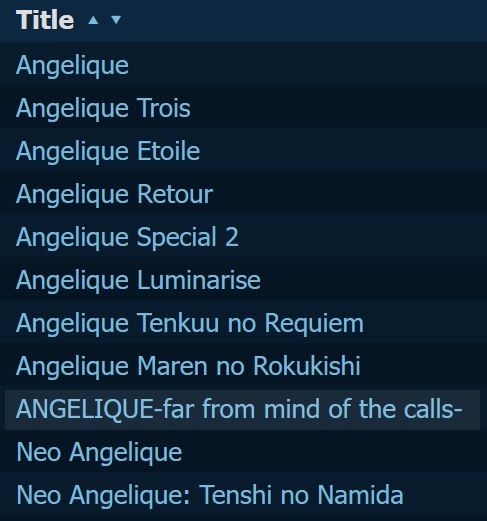
Ignore the fact that most of these games aren't actually visual novels; it's the highlighted title with the Engrish name that has our attention. ANGELIQUE-far from mind of the calls-, likely meant as something like Far from the Heart of the Call, or Far from the Beckoning Hearts. (Yearning Hearts Torn Asunder?) Clicking the title brings up a bizarre discovery:
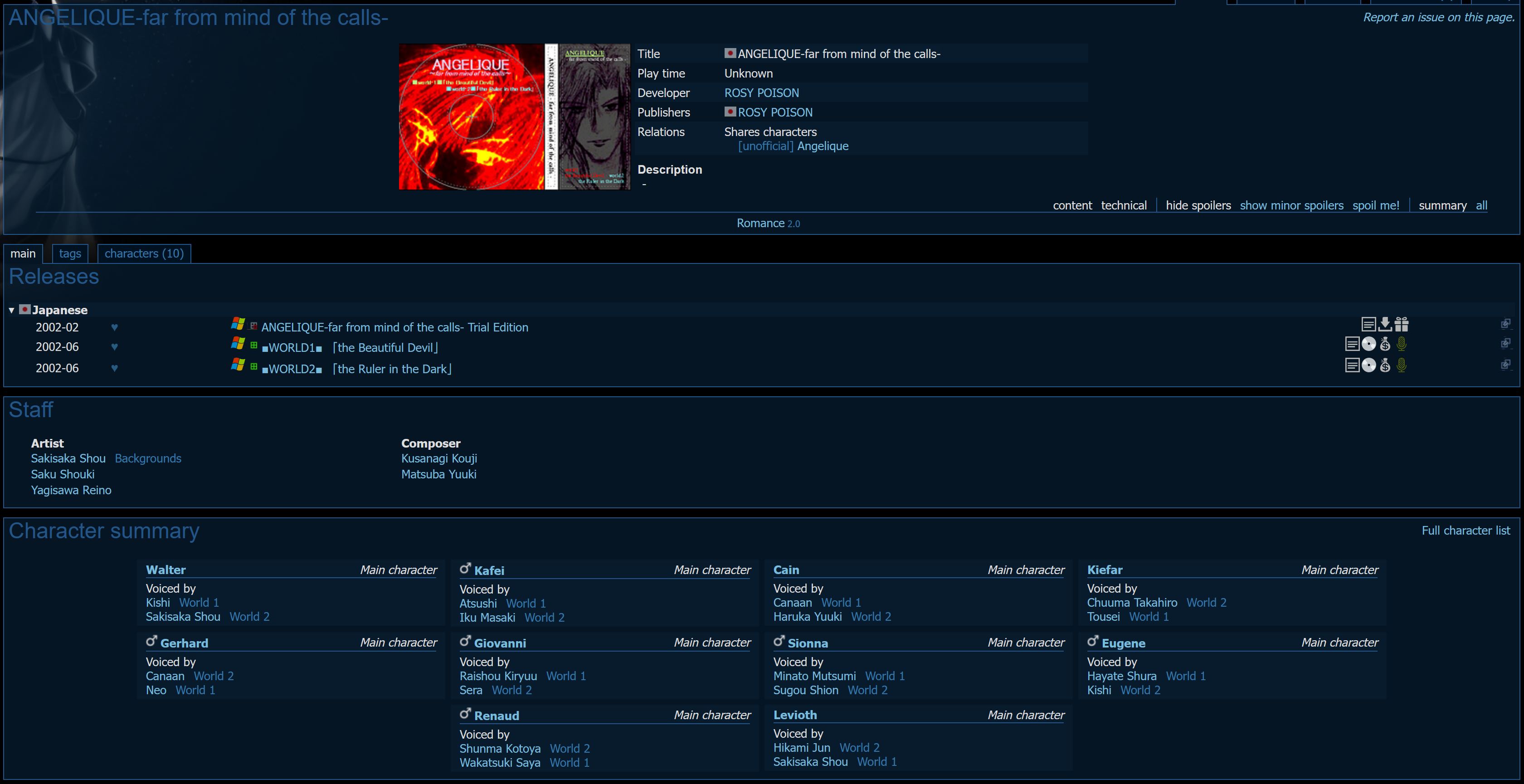
Spelling aside, I recognize those character names, but not those titles: the Beautiful Devil, the Ruler in the Dark. The pencil-sketch box art and "[unofficial] Angelique" label, however, reveal that this (if it exists - see below) is a fan game, one of which I hadn't previously heard. Furthermore, the VNDB listing has a link to an archive.org capture of the game's homepage:
I am a Queen.
I hear the voice of the Holy Beast, cultivate a universe, and watch over it from day to day, together with my Aide...
The day it happened was a day like any other...in which I was cultivating my new universe!
But, that day...in my office, I heard a voice in my mind.
Saying to me: "Help us...help those of us still screaming in the dark."
It sounded familiar to me, brought back memories...but I scarcely had the thought before I was flung to another land.
There...I found the age where Leviath and his subordinates were fighting a revolution, still in their original forms.
I, Angelique, know nothing...I am at the mercy of fate.
What will become of me?...I'm so, so scared!
This is an alternate story based on the idea of "Emperor" Leviath meeting Angelique in another form.
A tale of Queen Angelique being flung to the planet of Armis in the past, near the Imperial capital.
Lost in a world with Sacrea but no need for a Queen, the girl happens across Leviath's path.
(Naturally, this means there's no Arios. Don't get your hopes up.)
The page calls it a "mixed-media alternate-universe game," a "novel game with romance" "scheduled for production." A page with further details talks about the two discs as if they're separate scenarios - seemingly, one from Collet's point PoV, one from Leviath's. Here's the Beautiful Devil:
In a flash...a girl is summoned to another world. She is a goddess...one who beckons victory for Leviath and his subordinates.
She is unaware, however, that Leviath wishes to use the Queen's power only for revenge.
What is destined to become of her, then? It all depends on you.
And the Ruler in the Dark:
Leviath finds a girl who seeks help from him as if by instinct...and who is the image of his dead lover.
Upon meeting her, Leviath plots to deceive her...then eliminate her.
Can the darkness in Leviath's heart ultimately be dispelled?
An otome Zapping System? Perhaps not really - I doubt Collet was going to have to decide whether to forgo the machine gun or side pack to save them for Leviath later - but we all like to say "Zapping System."
Based on the scant single sample page archive.org has managed to save (of Collet waking up in an unfamiliar environment in a rainstorm), it seems that the game was intended to be akin to an HTML-based CYOA, with hand-drawn illustrations above text and clickable choices. It was also intended to have voice acting, with the promo page listing actors slated for Leviath and his knights. Oddly, a number of VAs were slated to appear in both scenarios but voicing totally different characters: Leviath's VA in the Beautiful Devil, for example, is listed as voicing Walter in the Ruler in the Dark, with Walter's actor in Devil shifting in Ruler to...Eugene. Cain's VA in the former was to voice Gerhard in the latter... I don't know why you would have your VAs switch roles, much less to characters who are drastically different in personality.
The website offered a trial zipped in .lzh format, but it doesn't seem to have been saved - archive.org offers an .lzh from the download link, but it's only a fraction of the trial's listed size, and it doesn't unzip.
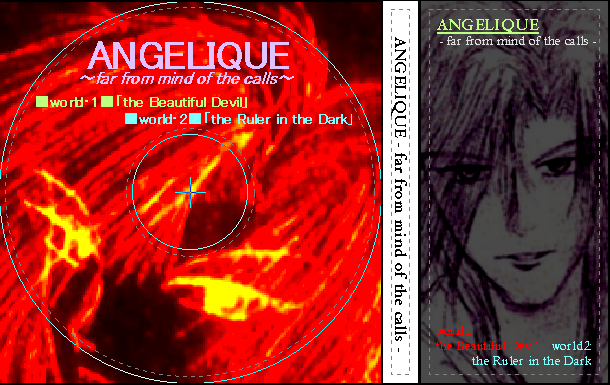
The game is by a studio called Rosy Poison, professed by its page to have also been producing a small number of original games. None of those titles, though, seem to have come to fruition - the latest news from their page (which is still up, incidentally) lists all its games as still "in production." The archive.org captures of the webpage run from Jan. 2002 to Apr. 2003. The Angelique doujin game was listed as to have been offering a trial in "February of next year" (meaning, at the time: 2003, though this page lists it as 2002), with the games following in "June of next year" (again, 2003; again, same disclaimer with that page); looking ahead to that time reveals no news.
It was at this point that I remembered the era in which these announcements were made. In the early popularization of the internet, in the mid to late '90s, with the dawn of emulation and folks dissecting the elements (sprites, maps, etc.) that created the commercial games we loved, many enterprising fans took these resources, combined them with internet's democratization of software distribution and programming educational materials, and tried to make fanfic sequels and spin-offs and tributes to the games they adored. I recall the numerous Phantasy Star fangame projects out there, all of which evinced a lot of love for PS, and a lot of creativity and enthusaism, but which didn't have great track records for bringing their visions to fruition. 2002–2003 would've been a little past that period, and it seems like Rosy Poison was really futzing around with webpages and digital media rather than any stuff involving game engines proper (the game was, the studio says, originally conceived as an HTML choose-your-own-adventure hosted on the web), but the point is: getting big projects past the finish line is hard (see my backlog of stalled translation projects and attempts to LP Angelique games), and this wouldn't be the first time around this era that a team's ambition and love for a franchise outstripped its ability to put out a finished product.
So if I had to put money on the question, I'd bet that these games probably don't exist in a finished form. But my questions extend past what we have on archive.org...to the existence of the VNDB listing itself. Who put this listing up? How did someone get wind of this title? Other Angelique titles have VNDB entries dating back almost ten years, with the more recent games listed somewhat near their release dates (Tenshi no Namida) or a few years after (Retour). Far from the mind of calls was listed on Dec. 10, 2022. This suggests that it was discovered recently.
I can find no links to Rosy Poison's webpage out there, no other mentions of this fan project on the modern internet - so how did whoever made the listing learn of it? Did they do so by finding, in a bunch of used stuff or old files, a copy of the missing trial - or maybe, just maybe, a copy of the fan game itself?
Is the discoverer out there? Do they have a copy of either the trial or, is it exists, the actual game? And, man, could they get in touch with me if so?
Fake EtA: As I was assembling this post, I checked out the latest version of Rosy Poison's update page archive.org has available - updated in Dec. 2001 - which notes that the "online HTML version" of far from the mind of calls was in that update "deleted." Are they referring to the downloadable .lzh - which was still linked in that Dec. 2002 page capture - or was there a full HTML version of this game (minus voice acting, music, and illustrations, I imagine) at one point?
The update page also gives an early version of the subtitle as Tooki Kioku no Yobigoe, or Call of Far-off Memory.
Page 12 of 56
